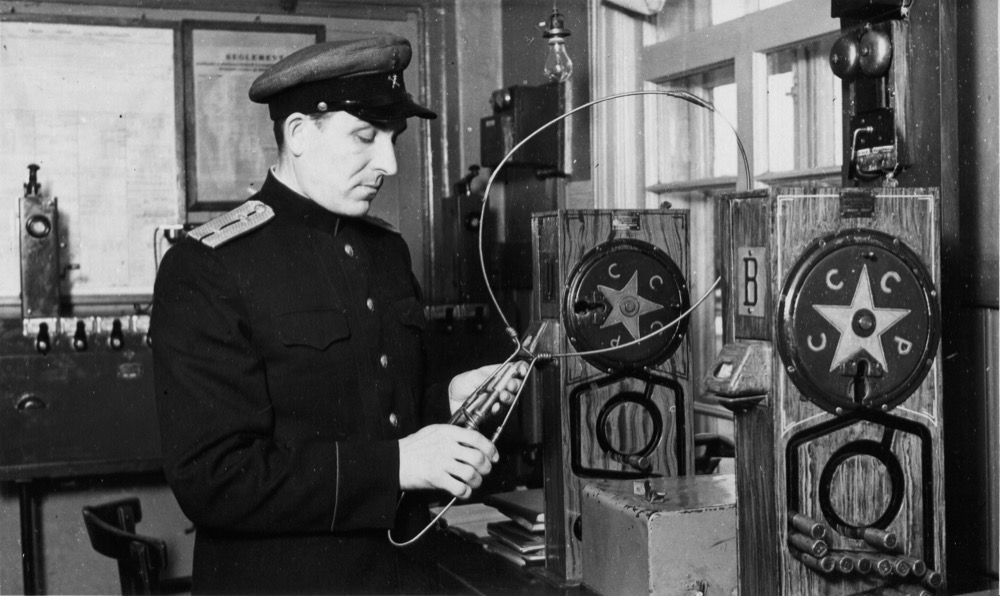
Installed on a special desk, there are two electric staff instruments, an inductor with diverter and communication devices on a vertical stand (local battery phone and telephone diverter with additional bell).
In Estonian railway signalling electric token systems were used before semiautomatic and automatic block systems. Locomotive driver was required to have a token before entering onto a particular section of single track. Assistant station master could release such token from an electrical token instrument only after receiving permission from the next station via phone. It was then followed by electric flow from that same station enabling to open electrical token instrument`s lock at the station of departure.
English Webb-Thompson & Smith system was introduced in Estonia as early as 1917 between Ülemiste and Narva station, but due to the war events and German occupation it was uncompleted and finally dismantled. The same system was established again in 1922 between Ülemiste and Sonda station, reaching Narva the following year and, by late 1924, Palupera station in Southern Estonia. In late 1940´s, a Soviet electric staff system created by engineer Daniil Treger was introduced on both broad and narrow gauge lines in Estonia.